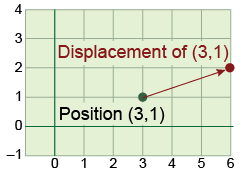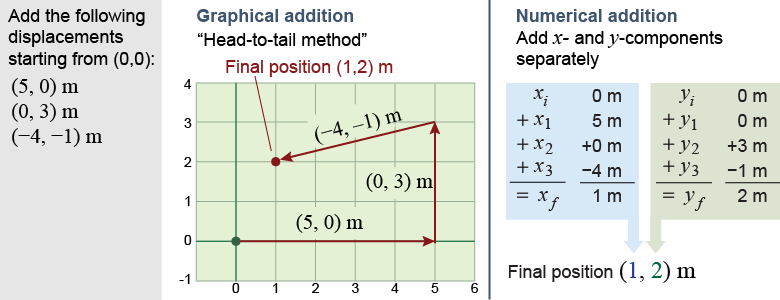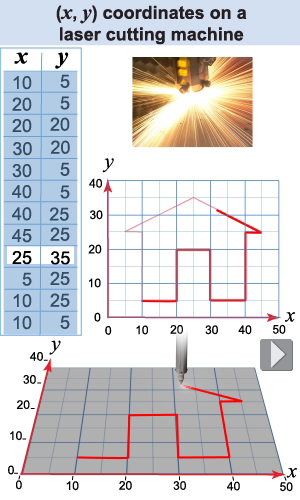|
The same concepts of displacement, distance, and position apply in two- and three-dimensional space. In two dimensions each position requires two values, which we call the x- and y-coordinates. Coordinates are values that specify position relative to an origin. For example, the coordinates (x, y) = (3, 1) m identify a point 3 m to the right and 1 m above the origin. Coordinates in physics have units of length, such as meters. When written as (3, 1) m, the first value is the x-coordinate and the second is the y-coordinate. 
|
 Displacements in two dimensions are written in the same format as position coordinates, but they are interpreted as movements. For example, the displacement d1 = (3, 1) m describes movement along a straight line that takes you 3 m to the right and 1 m up from your starting position.
Displacements in two dimensions are written in the same format as position coordinates, but they are interpreted as movements. For example, the displacement d1 = (3, 1) m describes movement along a straight line that takes you 3 m to the right and 1 m up from your starting position. 
|
Equation (3.1) applies to two and three dimensional problems when using variables that are two- or three-dimensional vectors. For example, in two dimensions, equation (3.1) is actually two separate equations, one for the x-coordinates and an identical one for the y-coordinates. 
|

|
Two-dimensional (2-D) displacements can be added both graphically and numerically. In the graphical method, each successive displacement is drawn from the current position to the new position. This is called the “head-to-tail method,” because the “tail” of each vector is drawn starting from the “head” of the previous vector. In the numerical method, x- and y-coordinates are added separately. - The final x position equals the initial x position plus x values of each displacement.
- The final y position equals the initial y position plus y values of each displacement.

|

 |
 A laser cutting machine is a technology for manufacturing that uses two-dimensional coordinates. This machine is typically used to cut parts out of sheet metal. An engineer first designs a part using a computer-aided design (CAD) program and creates a file with a series of (x, y) coordinates corresponding to the cuts that need to be made. This computer file is used to control the cutting laser so that it tracks out the same coordinates on the machine's work stage.
A laser cutting machine is a technology for manufacturing that uses two-dimensional coordinates. This machine is typically used to cut parts out of sheet metal. An engineer first designs a part using a computer-aided design (CAD) program and creates a file with a series of (x, y) coordinates corresponding to the cuts that need to be made. This computer file is used to control the cutting laser so that it tracks out the same coordinates on the machine's work stage.
A coordinate measuring machine (CMM) is a device that measures the three-dimensional coordinates for the surface of a part or object. You will learn about the CMM on page 176. 
|
| |
|

